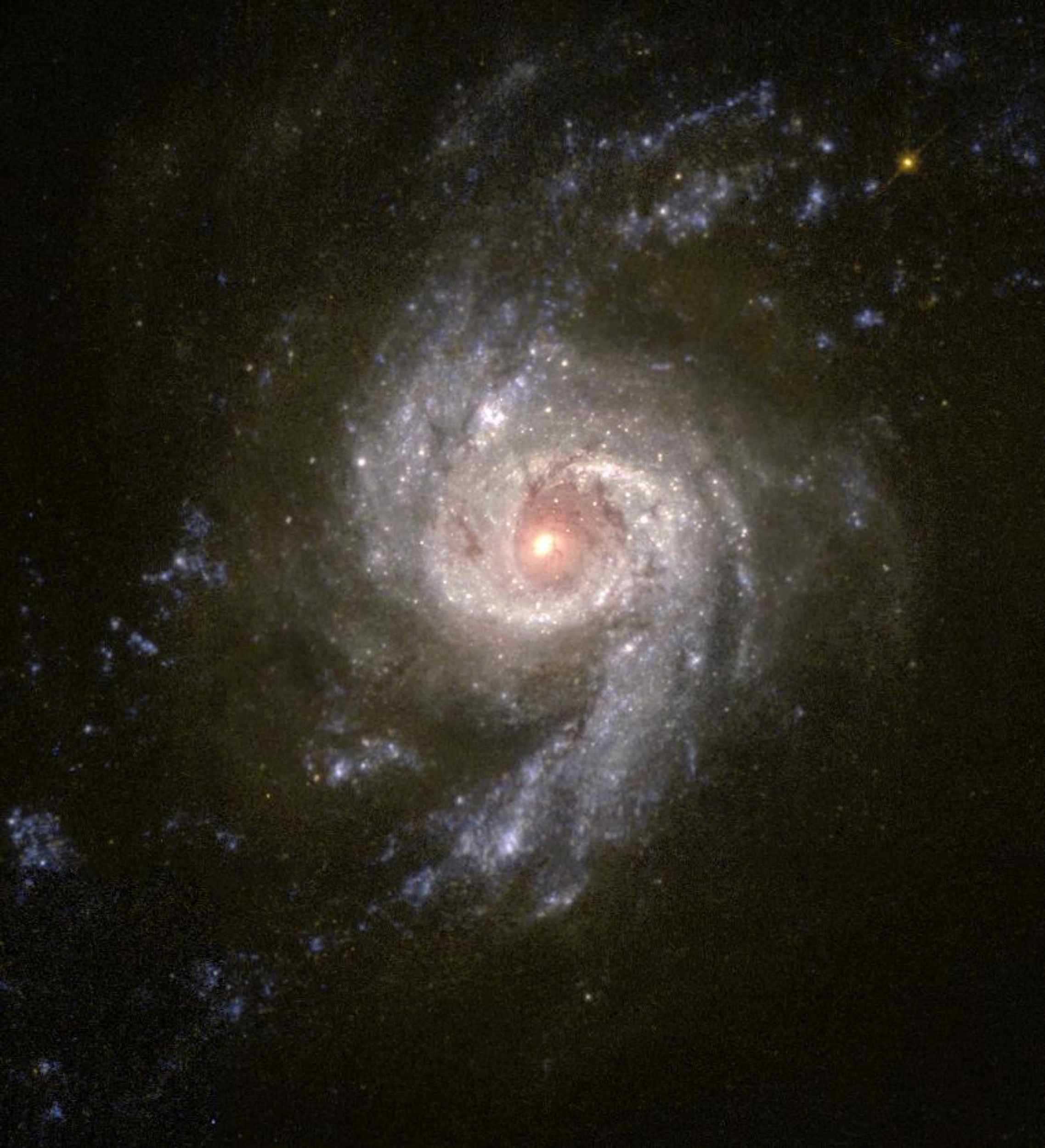
Scientists using NASA's Hubble Space Telescope are studying the colors of star clusters to determine the age and history of starburst galaxies, a technique somewhat similar to the process of learning the age of a tree by counting its rings.
This month's Hubble Heritage image showcases the galaxy NGC 3310. It is one of several starburst galaxies, which are hotbeds of star formation, being studied by Dr. Gerhardt Meurer and a team of scientists at Johns Hopkins University, Laurel, Md.
The picture, taken by Hubble's Wide Field and Planetary Camera 2, is online at http://hubblesite.org/newscenter/archive/releases/2001/26. The camera was designed and built by NASA's Jet Propulsion Laboratory, Pasadena, Calif.
Most galaxies form new stars at a fairly slow rate, but starburst galaxies blaze with extremely active star formation. Measuring the clusters' colors yields information about stellar temperatures. Since young stars are blue and older stars redder, the colors relate to their ages.
NGC 3310 is forming clusters of new stars at a prodigious rate. The new image shows several hundred star clusters, visible as the bright blue, diffuse objects that trace the galaxy's spiral arms. Each of these star clusters represents the formation of up to about a million stars, a process that takes less than 100,000 years. In addition, hundreds of individual young, luminous stars can be seen throughout the galaxy.
The star clusters become redder with age as the most massive and bluest stars exhaust their fuel and burn out. Measurements in this image of the wide range of cluster colors show their ages range between about one million and more than one hundred million years. This suggests that the starburst "turned on" more than 100 million years ago. It may have been triggered when NGC 3310 collided with a companion galaxy.
These observations may change astronomers' view of starbursts. Starbursts were once thought to be brief episodes, resulting from catastrophic events like a galactic collision. However, the wide range of cluster ages in NGC 3310 suggests that, once triggered, the starbursting can continue for a long time.
Located in the direction of the constellation Ursa Major, NGC 3310 is about 59 million light years from Earth. The image is based on observations made by the Wide Field and Planetary Camera 2 in March 1997 and September 2000. The Hubble Heritage Team created the color rendition of the combined images.
The Space Telescope Science Institute is operated by the Association of Universities for Research in Astronomy, Inc., for NASA, under contract with the Goddard Space Flight Center, Greenbelt, Md. The Hubble Space Telescope is a project of international cooperation between NASA and the European Space Agency. JPL is a division of the California Institute of Technology in Pasadena.
Additional information about the Hubble Space Telescope is available athttp://www.stsci.edu/hst/. More information about the Wide Field and Planetary Camera 2 is available at http://www.stsci.edu/hst/wfpc2.






















No hay comentarios:
Publicar un comentario